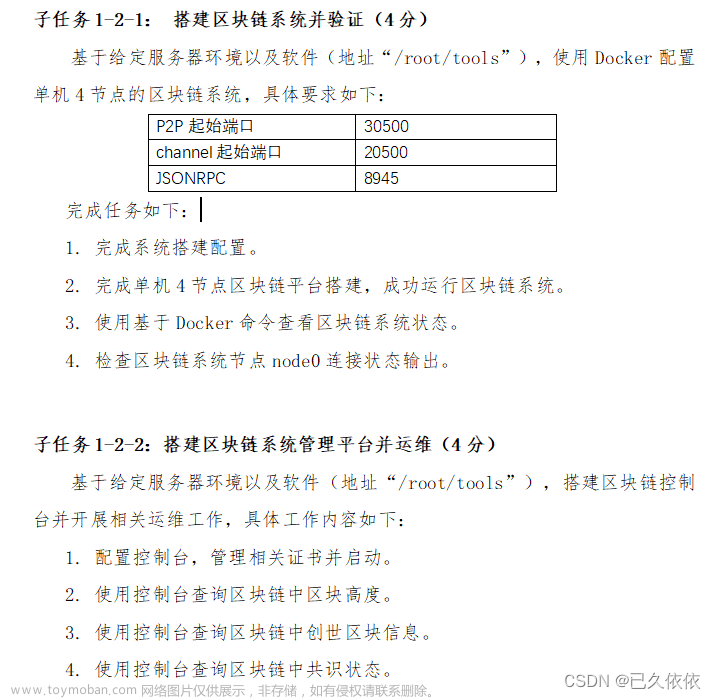欢迎观看我的博客,如有问题交流,欢迎评论区留言,一定尽快回复!(大家可以去看我的专栏,是所有文章的目录)
文章字体风格:
红色文字表示:重难点★✔
蓝色文字表示:思路以及想法★✔
如果大家觉得有帮助的话,感谢大家帮忙
点赞!收藏!转发!
A*算法是什么

比如如图,我们要搜索从起点到终点的最小距离
起点 一共连接6条边,
我们如果通过 起点的6条边 bfs 搜索 终点
万一搜索的第一挑边是 左上角那条,那么接下来的bfs会优先走这一条,但是这一条如果连接了 特比多边,就会导致,我们的算法时间复杂度非常大
那么我们优化办法就来了,就是
优先走 起点6条边中的 距离终点较 短的 路
怎么实现呢?
我们先从终点往外遍历,记录所有边到终点的距离,那么我们就会知道
起点的6条边中,哪一条边 距离终点较近
优先遍历这条就是了
以上就是A*算法的逻辑
也就是需要 预先处理一下 所有边到终点的最短距离(直接从终点开始遍历)
例题1. 第K短路
原题链接
题意解析
本题求A点到B点
路径长度排名第K 的 路径长度大小 是多少
我们画图自己简单分析一下,可以得出
A点到B点 会有非常非常多的路径走法
那么具体走哪些部分呢?
那就是 先走 距离B较小的路径部分
那么就用到了A*算法思想
我们先预处理一下,B点到所有点的最短距离
然后从A开始走,A点会连接很多点,但是先走 距离A点+距离B点 总和较小的点
如果走到了B那么就不再继续走
但是别的路径还是继续走
直到走到B为K次,那么文章来源:https://www.toymoban.com/news/detail-450685.html
此时的路径就是 第K长度文章来源地址https://www.toymoban.com/news/detail-450685.html
#include <cstring>
#include <iostream>
#include <algorithm>
#include <queue>
#define x first
#define y second
using namespace std;
typedef pair<int, int> PII;
typedef pair<int, PII> PIII;
const int N = 1010, M = 200010;
int n, m, S, T, K;
int h[N], rh[N], e[M], w[M], ne[M], idx;
int dist[N], cnt[N];
bool st[N];
void add(int h[],int a,int b,int c)
{
e[idx] = b;
w[idx] = c;
ne[idx] = h[a];
h[a] = idx++;
}
void dijkstra()
{
priority_queue<PII,vector<PII>,greater<PII>> heap;
heap.push({0,T});//终点
memset(dist, 0x3f, sizeof dist);
dist[T] = 0;
while(heap.size())
{
auto t = heap.top();
heap.pop();
int ver = t.y;
if(st[ver]) continue;
st[ver] = true;
for(int i=rh[ver];i!=-1;i=ne[i])
{
int j = e[i];
if(dist[j]>dist[ver]+w[i])
{
dist[j] = dist[ver] + w[i];
heap.push({dist[j],j});
}
}
}
}
int astar()
{
priority_queue<PIII, vector<PIII>, greater<PIII>> heap;
// 谁的d[u]+f[u]更小 谁先出队列
heap.push({dist[S], {0, S}});
while(heap.size())
{
auto t = heap.top();
heap.pop();
int ver = t.y.y,distance = t.y.x;
cnt[ver]++;
//如果终点已经被访问过k次了 则此时的ver就是终点T 返回答案
if(cnt[T]==K) return distance;
for(int i=h[ver];i!=-1;i=ne[i])
{
int j = e[i];
/*
如果走到一个中间点都cnt[j]>=K,则说明j已经出队k次了,且astar()并没有return distance,
说明从j出发找不到第k短路(让终点出队k次),
即继续让j入队的话依然无解,
那么就没必要让j继续入队了
*/
if(cnt[j] < K)
{
// 按 真实值+估计值 = d[j]+f[j] = dist[S->t] + w[t->j] + dist[j->T] 堆排
// 真实值 dist[S->t] = distance+w[i]
heap.push({distance+w[i]+dist[j],{distance+w[i],j}});
}
}
}
// 终点没有被访问k次
return -1;
}
int main()
{
cin >> m >> n;
memset(h,-1,sizeof h);
memset(rh,-1,sizeof rh);
for(int i=0;i<n;i++)
{
int a,b,c;
cin >> a >> b >> c;
add(h,a,b,c);
add(rh,b,a,c);
}
cin >> S >> T >> K;
// 起点==终点时 则d[S→S] = 0 这种情况就要舍去 ,总共第K大变为总共第K+1大
if (S == T) K ++ ;
// 从各点到终点的最短路距离 作为估计函数f[u]
dijkstra();
cout << astar();
return 0;
}
到了这里,关于【A*算法——清晰解析 算法逻辑——算法可以应用到哪些题目】例题1.第K短路的文章就介绍完了。如果您还想了解更多内容,请在右上角搜索TOY模板网以前的文章或继续浏览下面的相关文章,希望大家以后多多支持TOY模板网!












